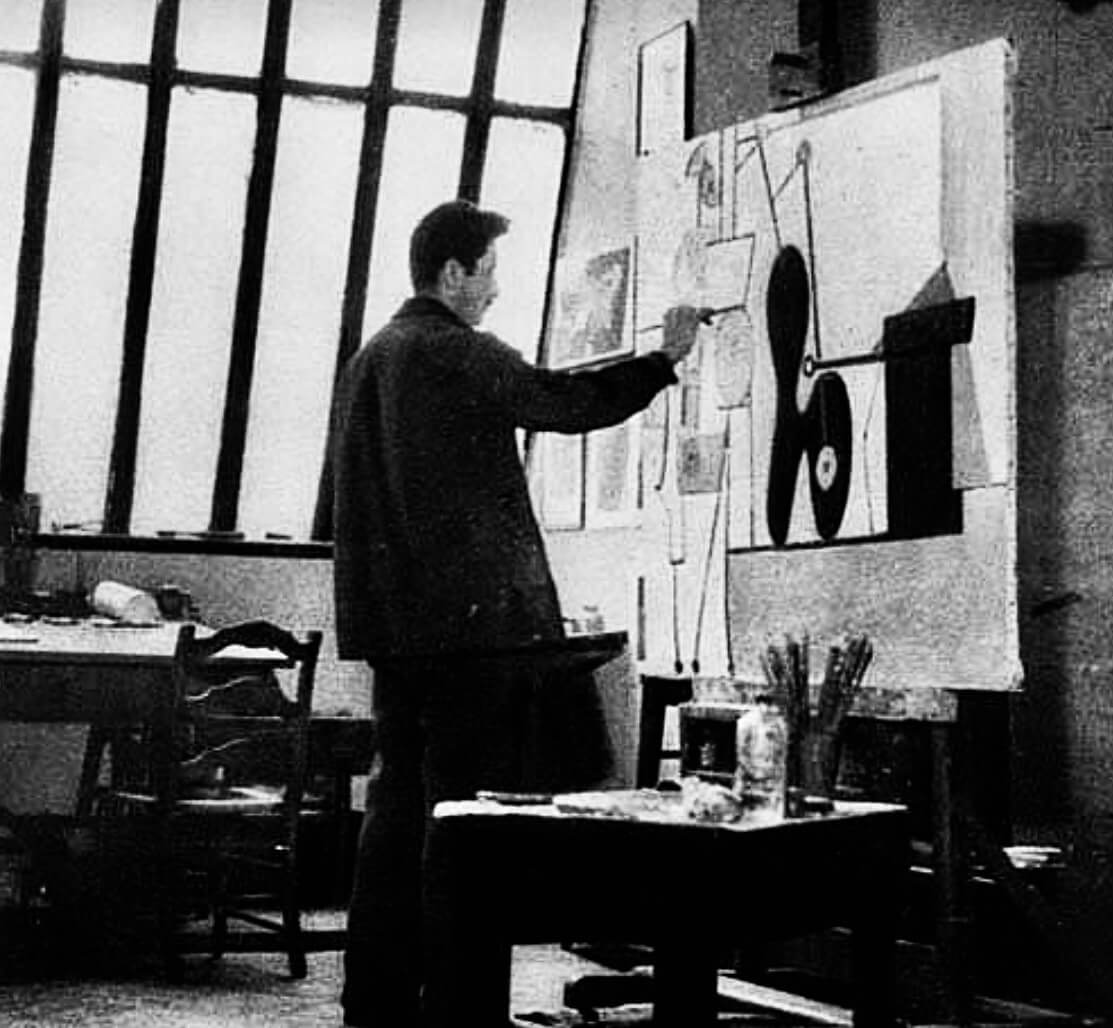Richard Pousette-Dart
Richard Pousette-Dart, born on June 8, 1916, in St. Paul, Minnesota, was an American painter and one of the founding figures of Abstract Expressionism. Known for his innovative use of color, form, and texture, Pousette-Dart’s work is celebrated for its spiritual and metaphysical depth. This article delves into the life and artistic journey of Richard Pousette-Dart, highlighting three of his most notable works.

Early Life and Education
Richard Pousette-Dart was born into an artistic family; his father, Nathaniel Pousette-Dart, was a painter and writer, and his mother, Flora Louise Dart, was a poet. This creative environment fostered his early interest in art. Pousette-Dart studied at the Scarborough School in New York and briefly attended Bard College. However, he left college after one year to pursue a career in art.
His early work was influenced by his studies in African, Oceanic, and Native American art, as well as his interest in European modernism. These influences can be seen in his early sculptures and paintings, which exhibit a strong sense of form and symbolism.
Career and Artistic Development
Pousette-Dart moved to New York City in the late 1930s, where he became associated with a group of artists who would later be known as the Abstract Expressionists. His early work included sculptures and paintings that were heavily influenced by surrealism and symbolism. However, it was his transition to large-scale abstract paintings that solidified his place in the movement.
During the 1940s, Pousette-Dart developed a style characterized by dense, intricate compositions and a vibrant use of color. His work from this period often featured biomorphic shapes and spiritual themes, reflecting his interest in mysticism and the subconscious.
Notable Works
1. “Symphony No. 1, The Transcendental” (1941-42)
One of Pousette-Dart’s most famous works, “Symphony No. 1, The Transcendental,” is a monumental painting measuring 90 by 165 inches. This piece is notable for its intricate composition and vibrant use of color. The painting is filled with abstract forms and symbols that seem to float in a cosmic space, creating a sense of depth and movement.
The work reflects Pousette-Dart’s interest in music and spirituality, with the title suggesting a symphonic arrangement of visual elements. The painting’s complexity and scale were groundbreaking at the time, making it a significant contribution to Abstract Expressionism.
2. “Guardian” (1943-44)
“Guardian” is another key work in Pousette-Dart’s oeuvre, showcasing his unique approach to abstraction. The painting features a central figure that appears to be a guardian or spiritual protector, surrounded by an intricate web of lines and shapes. The use of color and texture in this piece is particularly striking, with luminous whites and deep blacks creating a dramatic contrast.
This work exemplifies Pousette-Dart’s ability to imbue his abstract compositions with a sense of spiritual significance. The guardian figure, though abstract, conveys a powerful presence, suggesting themes of protection and transcendence.
3. “Presence, Healing Circle” (1973)
“Presence, Healing Circle” is a later work that demonstrates Pousette-Dart’s continued exploration of spiritual themes. This painting features a circular motif that radiates light and energy, symbolizing healing and wholeness. The use of color in this piece is particularly effective, with warm hues of yellow and gold creating a sense of warmth and illumination.
The circular form in this painting reflects Pousette-Dart’s interest in symbols of unity and eternity. The work is a testament to his belief in the healing power of art and his commitment to exploring the metaphysical dimensions of human experience.
Techniques and Innovations
Richard Pousette-Dart was known for his innovative use of materials and techniques. He often worked on a large scale, using thick impasto and vibrant colors to create textured, dynamic surfaces. His paintings are characterized by their intricate compositions and rich detail, with layers of paint creating a sense of depth and complexity.
Pousette-Dart’s use of color was particularly notable. He often employed a vibrant palette, using color to create mood and convey spiritual themes. His works are filled with luminous whites, deep blacks, and vibrant primary colors, creating a sense of energy and movement.
In addition to his use of color, Pousette-Dart was known for his intricate line work. His paintings often feature dense networks of lines and shapes, creating a sense of rhythm and movement. This attention to detail and complexity is a hallmark of his work, setting him apart from many of his contemporaries.
Personal Life and Influence
Pousette-Dart was deeply influenced by his interest in spirituality and mysticism. His work often explored themes of transcendence, unity, and the subconscious. He was also influenced by his studies of non-Western art, particularly African, Oceanic, and Native American art. These influences can be seen in his use of symbolic forms and his interest in the spiritual dimensions of art.
Pousette-Dart was also a dedicated teacher and mentor. He taught at several institutions, including the School of Visual Arts in New York and the Art Students League of New York. His influence extended to many younger artists, who were inspired by his commitment to exploring the spiritual and metaphysical dimensions of art.
Recognition and Legacy
Richard Pousette-Dart’s contributions to Abstract Expressionism have been widely recognized and celebrated. His work is held in major museums and collections around the world, including the Museum of Modern Art in New York, the Whitney Museum of American Art, and the Metropolitan Museum of Art.
Pousette-Dart’s legacy is marked by his innovative use of color, form, and texture, as well as his commitment to exploring spiritual and metaphysical themes. His work continues to inspire and challenge artists and viewers alike, reflecting his enduring relevance and significance in the art world.
Conclusion
Richard Pousette-Dart was a pioneering artist whose work spanned several styles and movements, from early surrealism and symbolism to Abstract Expressionism. Through his most notable works, such as “Symphony No. 1, The Transcendental,” “Guardian,” and “Presence, Healing Circle,” Pousette-Dart explored the complexities of spirituality, unity, and the human condition. His innovative techniques, bold thematic explorations, and profound influence on subsequent generations of artists ensure his lasting legacy in the history of modern art.



